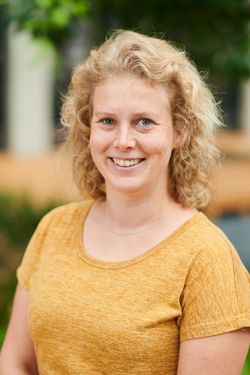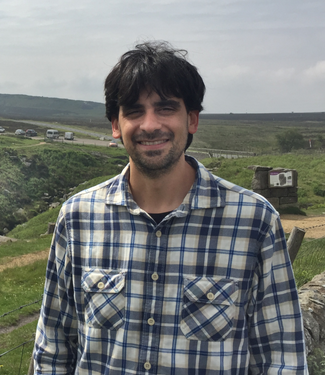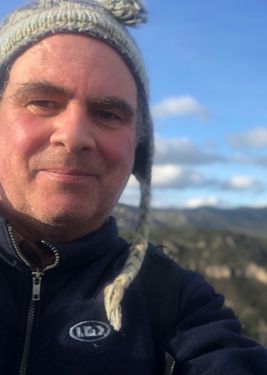
Dr. James H. Speer is a Professor of Geography and Geology at Indiana State University. He received his bachelors and master’s degree from the University of Arizona in Geosciences and his PhD from the University of Tennessee in Geography. He is a biogeographer who uses tree-rings to reconstruct environmental variables such as climate change, fire history, and insect outbreaks. He has collected tree-ring samples from around the world and many of the United States. Through his years of studying environmental history, he has realized that humans are operating outside of the natural range of variability for most natural systems, which has motivated him to give back to society by being a champion for sustainability at Indiana State University and in the Wabash Valley. He has written multiple books including a textbook on dendrochronology call the Fundamentals of Tree-Ring Research. More recently, he has published popular action-adventure novels that teach science through an adventure story in Exposé on Climate Change and Exposé on Sustainability.
Sessions in which Jim Speer participates
Tuesday 28 June, 2022
Thursday 30 June, 2022
Dendrochronological archives in the tropics of the Americas have been under-studied for a long time. Some of the challenges include the Identification of tree-ring boundaries in certain tree species, absence of winter dormancy associated to low temperatures in most of the cases, and logistic difficulties of fieldwork in remote sites. However, part of the slow progress is also related to the fact that historically much less resources have been inv...
The Caribbean, like much of the tropics, is underrepresented by tree-ring chronologies making global climate reconstructions a challenge because of these blind spots. We have developed a multi-centennial tree-ring chronology from 120 samples of Pinus occidentalis trees located above 2800 m elevation on the dry slopes of Loma la Pelona in the Cordillera Central (19.035278 N, -71.005278 W) of the Dominican Republic. We used skeleton plotting on multiple radii from each crossection to date th...
Sessions in which Jim Speer attends
Monday 27 June, 2022
Blue Intensity (BI) is a cost-effective analytical method for measuring relative wood density in the rings of conifer tree species. Since early concept papers in the 1990s/2000s, there has been a recent explosion in the application of this method for both dendroclimatology and historical dating as well as other dendro-disciplines. The beauty of BI is that the analytical costs, mainly related to the cost of a h...
Wednesday 29 June, 2022
Dendrochronology is considered one the most precise of all the scientific dating techniques. However, it requires long sequences of tree rings and a master record for both the species and region in question. At the University of Groningen, we have been pioneering a new approach to dating that combines the precision of dendrochronology with the versatility of radiocarbon dating. It relies on the detection of spikes in the annual radiocarbon record, thought to b...
Information garnered from historical timbers and wooden artifacts (e.g. houses, barns, ships) can greatly enhance our understanding of human, ecological, and climate history, especially in regions where few old-growth forests and trees remain, tree longevity is relatively short (less than 300-400 years), and environmental conditions break down wood rather quickly, like in mesic to wet regions. Over the last decade plus, the application of tree-ring techniques on wo...
Presentation of all Ameridendro2022 posters.FREE LUNCH FOR ALL ATTENDEES!
Session reescheduled from June 28th to June 29th
This is a mandatory (!) .... and FREE (!!) cocktail & award ceremony (!!!)(in replacement of the Banquet formula)->->->->->->->->->->->->->->->->->->After a great summer day of scientific and urban discoveries in our beloved MTL, we wish to bring together all the AmeriDendro community in one place and congratulate the TRS awardees for their remarkable achievements! -Bonsinsegna award-Fr...
Thursday 30 June, 2022
How old are tropical trees? This fundamental question has long driven the curiosity of laymen and scientists. But only recently, a great number of studies conducted by many brave dendrochronologists resulted in a significant tree-ring-based knowledge that allows us to start accurately estimating tree ages across the globe. As science goes, not only knowing the longevity of tropical trees is essential to understanding forest dynamics and its role in biogeochemical cycles, but one must also ...
Dendrochronological archives in the tropics of the Americas have been under-studied for a long time. Some of the challenges include the Identification of tree-ring boundaries in certain tree species, absence of winter dormancy associated to low temperatures in most of the cases, and logistic difficulties of fieldwork in remote sites. However, part of the slow progress is also related to the fact that historically much less resources have been inv...
A gap of millennial tree-ring data suitable for dendroclimatology has long been evident in the North American boreal forest. In my talk, I will describe the adaptive approach we have developed to build and improve a data network for millennial dendroclimatology in the eastern Canadian taiga. Recurrence of stand replacing wildfires is the most important constrain to the elaboration of long tree ring chronologies, which can only be developed away from regions ...
Allies have emerged as key enablers of diversity and inclusivity initiatives in the workplace, in professional associations, and in everyday life. But what is an ally? What skills are required to be an effective ally? How do we hold ourselves and our community members accountable for being effective allies? This symposium will provide a deeper understanding of what it means to be an ally and the skills to help advance allyship as individuals and as a community. Fur...
(by bus, max 92 people)Designed for visitors and newcomers, the tour is based on the pleasure...



